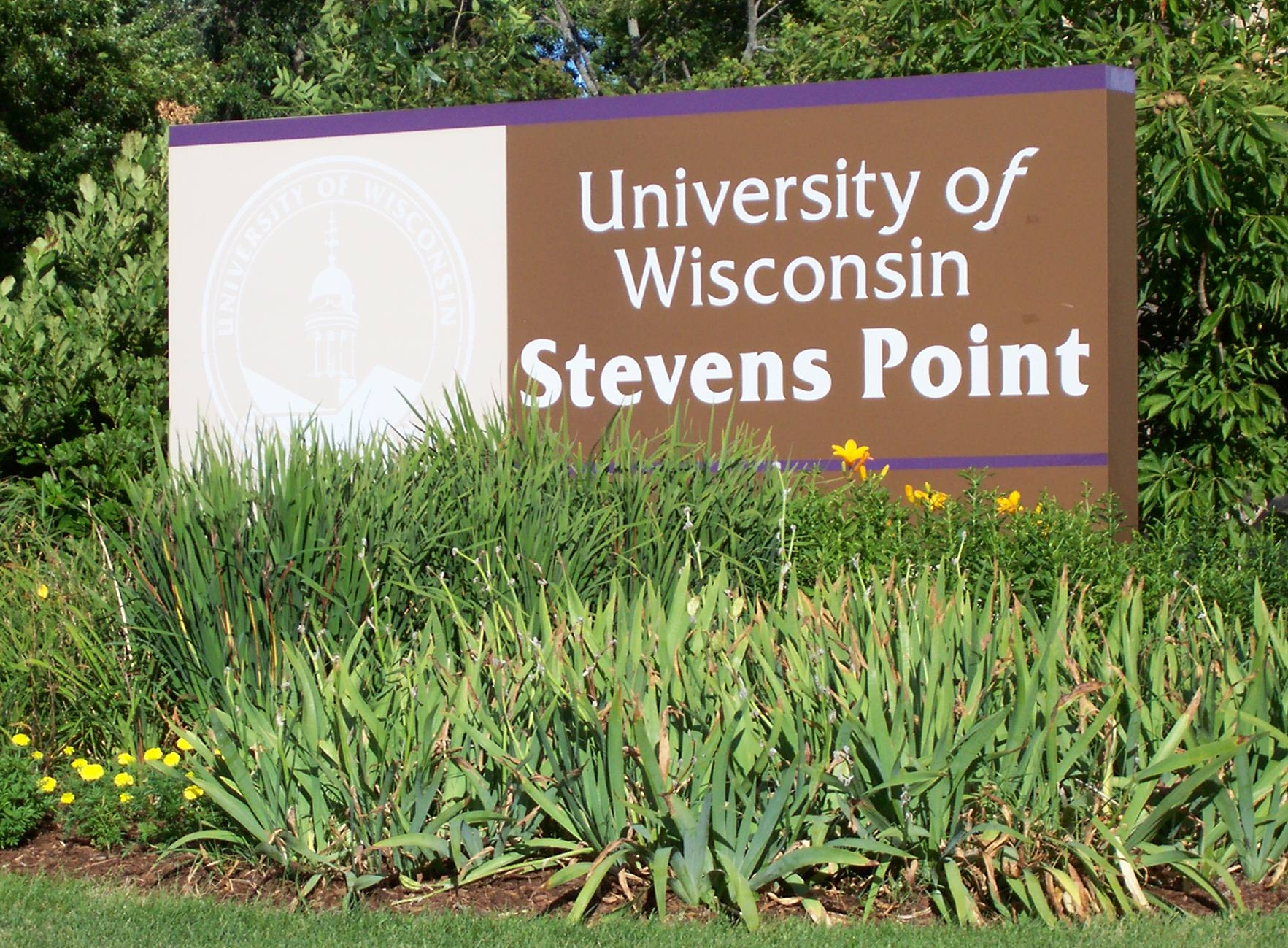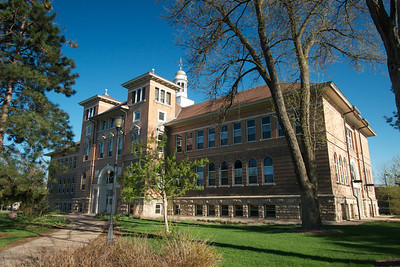|
Schmeeckle Reserve (Stevens Point, Wisconsin)
Schmeeckle Reserve is a natural land area located on the University of Wisconsin–Stevens Point, in Stevens Point, Wisconsin, United States. It contains hiking trails, natural land area, a visitor center, multiple habitats, abundant wildlife and a manmade lake. "The Reserve was created to protect and restore native ecological communities, serve as an outdoor classroom for students and teachers, and provide recreational opportunities to all visitors." History Before 1956 the current Schmeeckle Reserve was farmland (corn and grain) and grazing (dairy cattle) land. This land, however was not fertile enough to support a large plant population for agriculture due to bedrock close to the surface, making some areas too wet or dry to support crops.Schmeeckle Reserve website, ''History'' By the 1950s several farmers had abandoned their efforts to make the ground agriculturally productive (abandoned machinery and building foundations are still visible onsite). The University began purchasi ... [...More Info...] [...Related Items...] OR: [Wikipedia] [Google] [Baidu] |
Stevens Point, Wisconsin
Stevens Point is the county seat of Portage County, Wisconsin, United States. The city was incorporated in 1858. Its 2020 population of 25,666 makes it the largest city in the county. Stevens Point forms the core of the United States Census Bureau's Stevens Point Micropolitan Statistical Area, which had a 2020 population of 70,377 Stevens Point is home to the University of Wisconsin–Stevens Point and a campus of Mid-State Technical College. History Historically part of the Menominee homelands, a three-mile strip along the Wisconsin River was ceded to the United States in an 1836 treaty. In 1854 the Menominee made its last treaty with the U.S., gathering on a reservation on the Wolf River. In the Menominee language it is called ''Pasīpahkīhnen'' which means "It juts out as land" or "point of land". Stevens Point was named after George Stevens, who operated a grocery and supply business on the Wisconsin River during the extensive logging of interior Wisconsin. The river w ... [...More Info...] [...Related Items...] OR: [Wikipedia] [Google] [Baidu] |
University Of Wisconsin–Stevens Point
The University of Wisconsin–Stevens Point (UW–Stevens Point or UWSP) is a public university in Stevens Point, Wisconsin. It is part of the University of Wisconsin System and grants associate, baccalaureate, and master's degrees, as well as doctoral degrees in audiology and educational sustainability. As of 2018, UW-Stevens Point has merged with UW-Stevens Point at Wausau and UW-Stevens Point at Marshfield. History After securing land and funding from the City of Stevens Point and Portage County and winning the right to host the new normal school, Stevens Point Normal School opened on September 17, 1894, with 201 students. In addition to teacher preparation, "domestic science" (home economics) and conservation education were offered; the latter formed the basis for the College of Natural Resources. In 1927, Stevens Point Normal School became Central State Teachers College and began offering four-year teaching degrees. When post-World War II enrollment became less center ... [...More Info...] [...Related Items...] OR: [Wikipedia] [Google] [Baidu] |
Sentry Insurance
Sentry Insurance is a mutual insurance company specializing in business insurance. The company’s home office is in Stevens Point, Wisconsin, where about half the company’s approximately 4,500 employees are located. Sentry offers property and casualty insurance, workers' compensation, life insurance, and other business insurance, as well as non-insurance products like annuities and retirement programs. Sentry provides specialized insurance programs to customers in specific industries as well as very large companies with complex risk. Sentry is one of the nation’s largest mutual insurance companies. As of December 31, 2014, the company has assets of more than $21.6 billion and a policyholder surplus of over $6.54 billion. Sentry was rated A+ by A.M. Best, the insurance industry’s leading rating authority, as of 2015. In 2022, Sentry Insurance was ranked 650 on the Fortune 1000 list of companies. History Sentry Insurance was founded in 1904 by members of the Wisconsin R ... [...More Info...] [...Related Items...] OR: [Wikipedia] [Google] [Baidu] |
Nebraska
Nebraska () is a state in the Midwestern region of the United States. It is bordered by South Dakota to the north; Iowa to the east and Missouri to the southeast, both across the Missouri River; Kansas to the south; Colorado to the southwest; and Wyoming to the west. It is the only triply landlocked U.S. state. Indigenous peoples, including Omaha, Missouria, Ponca, Pawnee, Otoe, and various branches of the Lakota (Sioux) tribes, lived in the region for thousands of years before European exploration. The state is crossed by many historic trails, including that of the Lewis and Clark Expedition. Nebraska's area is just over with a population of over 1.9 million. Its capital is Lincoln, and its largest city is Omaha, which is on the Missouri River. Nebraska was admitted into the United States in 1867, two years after the end of the American Civil War. The Nebraska Legislature is unlike any other American legislature in that it is unicameral, and its members a ... [...More Info...] [...Related Items...] OR: [Wikipedia] [Google] [Baidu] |
List Of Botanical Gardens And Arboretums In Wisconsin
This list of botanical gardens and arboretums in Wisconsin is intended to include all significant botanical gardens and arboretums in the U.S. state of Wisconsin. See also *List of botanical gardens and arboretums in the Un ...
[...More Info...] [...Related Items...] OR: [Wikipedia] [Google] [Baidu] |
Botanical Gardens In Wisconsin
Botany, also called plant science (or plant sciences), plant biology or phytology, is the science of plant life and a branch of biology. A botanist, plant scientist or phytologist is a scientist who specialises in this field. The term "botany" comes from the Ancient Greek word (') meaning "pasture", "herbs" "grass", or "fodder"; is in turn derived from (), "to feed" or "to graze". Traditionally, botany has also included the study of fungi and algae by mycologists and phycologists respectively, with the study of these three groups of organisms remaining within the sphere of interest of the International Botanical Congress. Nowadays, botanists (in the strict sense) study approximately 410,000 species of land plants of which some 391,000 species are vascular plants (including approximately 369,000 species of flowering plants), and approximately 20,000 are bryophytes. Botany originated in prehistory as herbalism with the efforts of early humans to identify – and later cultiv ... [...More Info...] [...Related Items...] OR: [Wikipedia] [Google] [Baidu] |
Arboreta In Wisconsin
An arboretum (plural: arboreta) in a general sense is a botanical collection composed exclusively of trees of a variety of species. Originally mostly created as a section in a larger garden or park for specimens of mostly non-local species, many modern arboreta are in botanical gardens as living collections of woody plants and is intended at least in part for scientific study. In Latin, an ''arboretum'' is a place planted with trees, not necessarily in this specific sense, and "arboretum" as an English word is first recorded used by John Claudius Loudon in 1833 in '' The Gardener's Magazine'', but the concept was already long-established by then. An arboretum specializing in growing conifers is known as a pinetum. Other specialist arboreta include saliceta ( willows), populeta ( poplar), and querceta ( oaks). Related collections include a fruticetum, from the Latin ''frutex'', meaning ''shrub'', much more often a shrubbery, and a viticetum (from the Latin ''vitis,'' mean ... [...More Info...] [...Related Items...] OR: [Wikipedia] [Google] [Baidu] |
Nature Centers In Wisconsin
Nature, in the broadest sense, is the physical world or universe. "Nature" can refer to the phenomena of the physical world, and also to life in general. The study of nature is a large, if not the only, part of science. Although humans are part of nature, human activity is often understood as a separate category from other natural phenomena. The word ''nature'' is borrowed from the Old French ''nature'' and is derived from the Latin word ''natura'', or "essential qualities, innate disposition", and in ancient times, literally meant "birth". In ancient philosophy, ''natura'' is mostly used as the Latin translation of the Greek word ''physis'' (φύσις), which originally related to the intrinsic characteristics of plants, animals, and other features of the world to develop of their own accord. The concept of nature as a whole, the physical universe, is one of several expansions of the original notion; it began with certain core applications of the word φύσις by pre-Socr ... [...More Info...] [...Related Items...] OR: [Wikipedia] [Google] [Baidu] |
Protected Areas Of Portage County, Wisconsin
Protection is any measure taken to guard a thing against damage caused by outside forces. Protection can be provided to physical objects, including organisms, to systems, and to intangible things like civil and political rights. Although the mechanisms for providing protection vary widely, the basic meaning of the term remains the same. This is illustrated by an explanation found in a manual on electrical wiring: Some kind of protection is a characteristic of all life, as living things have evolved at least some protective mechanisms to counter damaging environmental phenomena, such as ultraviolet light. Biological membranes such as bark on trees and skin on animals offer protection from various threats, with skin playing a key role in protecting organisms against pathogens and excessive water loss. Additional structures like scales and hair offer further protection from the elements and from predators, with some animals having features such as spines or camouflage servin ... [...More Info...] [...Related Items...] OR: [Wikipedia] [Google] [Baidu] |







.jpg)
